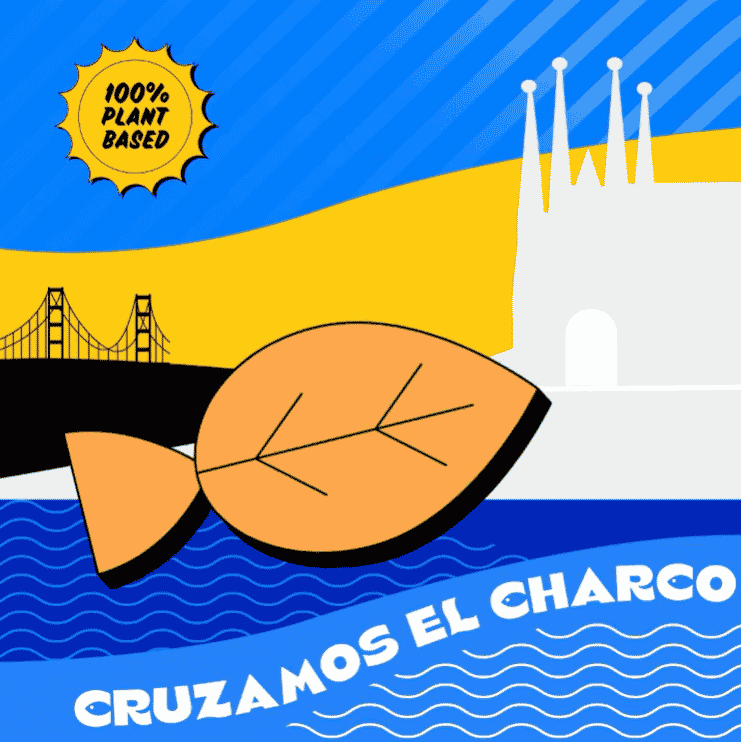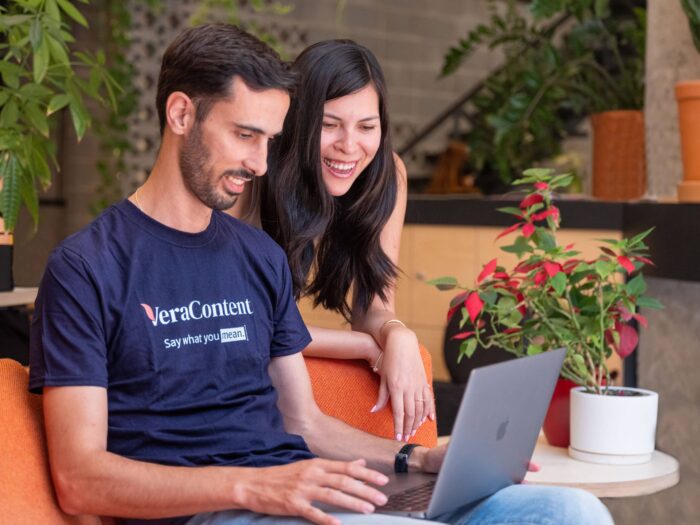Social media is an integral part of everyday life in Spain. For global marketers, understanding the most popular social media platforms in the Spanish market and how people use them is essential for creating campaigns that truly resonate.
In this article, we’ll explore the most popular social media platforms in Spain, break down audience behaviors on each and share strategies for building an effective local presence.
The most used social media platforms in Spain
Spain has one of the highest rates of social media usage in Europe. According to the latest figures from DataReportal, over 94% of the population is online, and social media penetration is steadily growing. Platforms like YouTube, Instagram, Facebook, TikTok and LinkedIn all have significant user bases, but their audiences and use cases differ greatly.
One distinction from other European markets is Spain’s strong video-first culture. YouTube leads by a wide margin, while Instagram’s visual storytelling and TikTok’s short-form creativity dominate among younger audiences.
Facebook remains relevant among older demographics, while LinkedIn has established a strong professional presence.
See also: Content marketing in Spain vs. the US: 9 key differences
YouTube: expand your audience
With over 39 million users, around 80% of the country’s population, YouTube is a great way to reach a broad audience in Spain. Its audience spans all ages, from teens following their favorite content creators to older generations seeking tutorials, entertainment or news. The gender split is almost even (51% female, 49% male), giving brands a balanced reach across demographics.
Culturally, YouTube thrives in Spain because it blends entertainment with education. Lifestyle vlogs, humorous sketches and tutorials are especially popular, particularly when delivered by trusted local creators. Both long-form and short-form perform well, but mobile-friendly formats are growing fastest.
For marketers, YouTube offers opportunities to blend branding with storytelling. Campaigns that feel conversational, authentic and rooted in Spanish humor or cultural references tend to see the highest engagement.
KFC España is a great example of sharing story-based videos on YouTube in both long and short form.
Quick tips for marketers to succeed on YouTube in Spain:
- Schedule uploads in the evenings or weekends, when Spanish users are most active
- Blend entertainment with subtle calls to action rather than overt ads
- Encourage comments and interaction to feed the algorithm and build community
See also: Influencer marketing works: Here’s how to get results
Facebook: connecting with local communities
While Facebook’s global image has shifted toward an older demographic, it remains an important platform with over 35 million users (75% of the population) in Spain. It is especially popular among users aged 35 and up, making it valuable for targeting more mature consumers.
Facebook’s community focus resonates strongly in Spain, where local groups, event pages and neighborhood communities are a cultural staple. This makes it valuable for regional campaigns, local businesses and community-driven storytelling.
Brands that see the best results on Facebook in Spain tailor their messaging for relevance, emphasizing shared experiences and practical value. Visual content still performs well, but clear, informative posts are equally effective for this audience.
Quick tips for marketers to succeed on Facebook in Spain:
- Use event pages to promote local launches, meetups or campaigns
- Respond quickly to comments and messages, since personal engagement drives loyalty
- Experiment with Facebook Marketplace for product discovery
Instagram: visual storytelling with a wide reach
As of 2025, Instagram has over 27 million users in Spain, reaching 56% of the population. The platform’s user base skews slightly female (55%) and younger, though older demographics are increasingly active, particularly in lifestyle, travel and food-related content. Its visual-first format makes it a powerful tool for aspirational branding.
Spanish Instagram culture blends global trends with local flair—think Mediterranean aesthetics, regional cuisine and the country’s strong fashion and design heritage. Stories, Reels and carousel posts all perform well, with Reels offering especially high organic reach. Partnering with local creators can help brands tap into niche audiences while maintaining authenticity.
Brands that succeed on Instagram in Spain focus on aesthetics, narrative and emotional resonance. The most engaging campaigns feel less like advertising and more like an invitation into a lifestyle.
See below an example of a collaboration that our client Too Good To Go did with a Spanish influencer on Instagram:
Quick tips for marketers to succeed on Instagram in Spain:
- Post during lunch breaks and late evenings, peak scrolling times in Spain
- Highlight Spanish cultural holidays and traditions to stay relevant
- Use local hashtags to connect with regional audiences
TikTok: reach youth with viral content
TikTok has rapidly gained momentum in Spain, with 19 million users (39% penetration). Its audience is heavily skewed toward younger demographics, but the platform’s influence on trends, music and consumer behavior extends well beyond its core user base.
Spanish TikTok thrives on humor, creativity and authenticity. Challenges, dances and comedic sketches dominate, often infused with local slang, cultural references and trending music. For brands, success comes from participating in these trends naturally rather than forcing overt advertising.
TikTok’s algorithm rewards engagement and originality, giving even smaller brands the chance to go viral. Marketers should see it less as a direct selling tool and more as a way to spark brand awareness and cultural relevance.
Quick tips for marketers to succeed on TikTok in Spain:
- Partner with micro-influencers who can bring authenticity at a lower cost
- Post frequently—consistency increases chances of landing on “For You” feeds
- Localize trending audio by mixing in Spanish or regional slang
“I think a good tip is to follow TikTok influencers and content creators because they are creating the trends all the time. Also, follow key brands whose strategy is based on trends.”
— Paula Uccelli, Project Manager, Team Lead at VeraContent
See also: Launching on TikTok: Strategies, trends and tips for brands
LinkedIn: professional network and B2B influence
LinkedIn has grown steadily in Spain, reaching 17 million registered members in 2025, with around 3.5 million active users as of July 2025. While smaller in user base compared to other social platforms, it holds unmatched value for professional networking, B2B marketing and employer branding.
Its audience skews toward professionals, entrepreneurs and decision-makers, making it a high-quality environment for business-focused campaigns.
Spanish professionals increasingly use LinkedIn not only for job searches, but also for thought leadership, industry news and skills development. Posts that share insights, data and real-world case studies tend to spark engagement, while video and carousel formats help bring more complex ideas to life.
For marketers, LinkedIn in Spain works best as a platform for building credibility over time rather than driving quick conversions. Consistency, authenticity and value-driven content are key to earning attention in this professional space.
See below an example of, our client, redk sharing a case study on their LinkedIn profile in Spanish:
We support redk with managing their Spanish LinkedIn profile, helping them grow their follower base by 30% year over year. Learn more here.
Quick tips for marketers to succeed on LinkedIn in Spain:
- Share insights in Spanish to engage local professionals and expand reach
- Join LinkedIn groups for industries active in Spain, like tourism, tech or renewable energy
- Use employee advocacy programs to extend your organic visibility
See also: AI-powered LinkedIn content strategies for global marketers
VeraContent success story: Current Foods & La Sirena

One of the clearest examples of adapting to Spanish social media habits comes from VeraContent’s campaign for Current Foods and La Sirena. The challenge was to introduce a plant-based seafood product in a market deeply connected to traditional cuisine.
We worked with the client to create visuals that placed the product in familiar culinary contexts, such as tapas-style plates and Mediterranean recipes. We paired them with captions that reflected Spain’s warm, conversational communication style. The result was content that felt authentic to local audiences while still conveying the innovative nature of the product.
This approach demonstrates the importance of cultural adaptation. Even when a brand has a strong global identity, success in Spain often depends on how well it can align with local traditions, tastes and ways of speaking.
Find out more: Spanish Social Media Management at VeraContent
Understanding Spanish social media behavior
While platform popularity is important, success in Spain depends just as much on understanding user behavior. Spaniards tend to value authenticity, personal connection and cultural relevance in brand communication. Overly direct sales pitches are less effective than storytelling and community engagement.
Language is central to this. Choosing between “tú” and “usted” can change how a message is perceived, as can using region-specific vocabulary or idioms. Humor is popular, but should be adapted carefully. A joke that works in English might fall flat in Spanish if it doesn’t align with cultural references.
Shopping behavior is also worth noting. Compared to markets like the UK, Spanish consumers tend to spend more time researching products before making a purchase, placing high importance on trust and brand familiarity. That means consistent, quality engagement on Spanish social media sites can directly influence buying decisions over time.
“I would advise any brand to hire local copywriters if they want to unlock the power of creative copywriting, especially in social media marketing. It’s so important to include cultural references, wordplays and idiomatic expressions that resonate locally.”
— Begonia Sampietro, Spanish linguist and copywriter at VeraContent
Download our Ultimate Guide to Managing Multilingual Social Media Accounts:

Effective engagement strategies on social networks in Spain
Timing matters. Posts often perform best outside of standard working hours, particularly in the evenings and on weekends. Each platform has its own peak times, so it’s worth experimenting to find the sweet spot for your audience.
Hashtags can be a powerful discovery tool, but translating them isn’t always necessary. Sometimes, using the English version keeps its connection to a global trend. On the other hand, localized hashtags can boost reach within Spanish-speaking audiences.
Above all, engagement in Spain is about conversation, not just content distribution. Replying to comments, acknowledging user-generated content and creating two-way interactions are critical to building loyalty.
See also: 12 multilingual social media tips that really work
Key takeaways for marketers
The most popular social media apps in Spain offer huge opportunities for brands willing to adapt their approach.
YouTube’s dominance shows the importance of video; Instagram and TikTok cater to visually driven and younger audiences, Facebook remains valuable for older demographics and local communities and LinkedIn is essential for professional engagement.
But numbers alone aren’t enough. Understanding Spanish cultural norms, communication styles and platform-specific behaviors is what turns a presence into a real connection. Whether you’re running global campaigns or starting fresh in the market, a localized strategy is the key to making an impact.
Spain’s social media ecosystem is dynamic, diverse and full of potential for brands that approach it with the right mix of data and cultural insight. By focusing on the platforms that matter most and tailoring content to local behaviors and preferences, marketers can build campaigns that go beyond visibility to create lasting engagement.
If you’re ready to take your social media strategy in Spain to the next level, book a call with our team to find out if you qualify for a Free Content Consultation.

